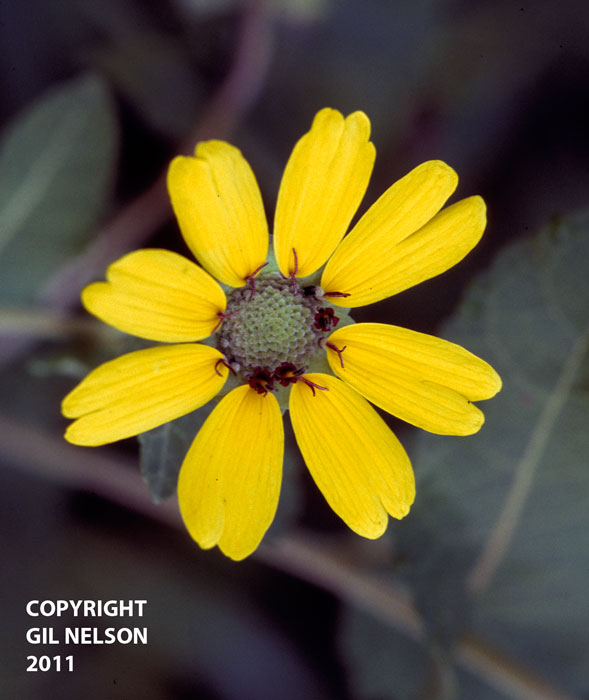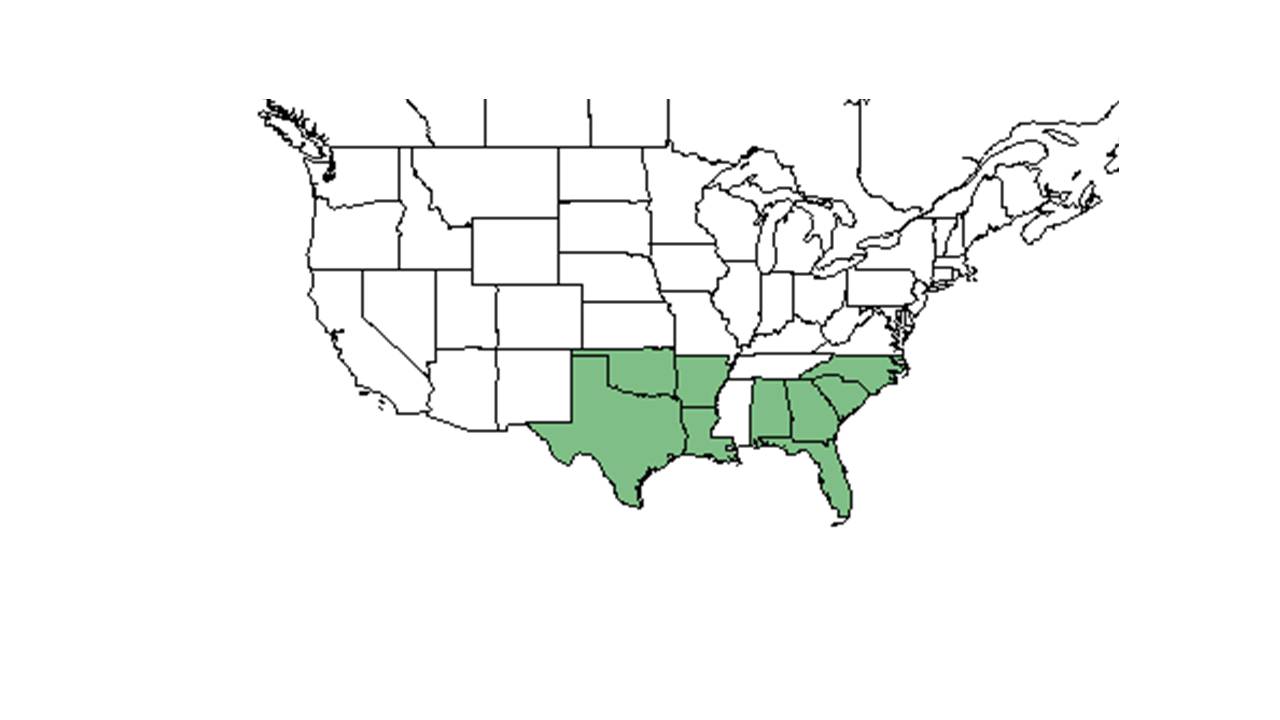Difference between revisions of "Berlandiera pumila"
KatieMccoy (talk | contribs) |
|||
| Line 26: | Line 26: | ||
==Ecology== | ==Ecology== | ||
===Habitat=== <!--Natural communities, human disturbed habitats, topography, hydrology, soils, light, fire regime requirements for removal of competition, etc.--> | ===Habitat=== <!--Natural communities, human disturbed habitats, topography, hydrology, soils, light, fire regime requirements for removal of competition, etc.--> | ||
| − | ''B. pumila'' is found in longleaf pine-wiregrass sandhill communities, turkey oak hardwood sand ridges, and the borders between sandhills and hammocks | + | ''B. pumila'' is found in longleaf pine-wiregrass sandhill communities, turkey oak hardwood sand ridges, and the borders between sandhills and hammocks. It is also found in disturbed areas including roadsides and clear-cut pine stands. This species generally prefers to grow in sandy soil types like drying loamy sand<ref name="fsu">Florida State University Robert K. Godfrey Herbarium database. URL: http://herbarium.bio.fsu.edu. Last accessed: June 2014. Collectors: L. C. Anderson, R. S. Blaisdell, D. Demaree, P. Elliot, W. T. Gillis, R. K. Godfrey, B. Hansen, J. Hansen, G. R. Knight, M. Knott, R. Kral, R. L. Lazor, J. B. Nelson, R. A. Norris, G. W. Ramsey, C. R. Slaughter, H. L. Stripling, B. Tan, L. E. Williams, and J. Wooten. States and Counties: Florida: Alachua, Bay, Calhoun, Columbia, Escambia, Franklin, Gadsden, Hamilton, Jackson, Lafayette, Leon, Liberty, Madison, Nassau, Okaloosa, Santa Rosa, Wakulla, and Washington. Georgia: Decatur.</ref>. |
| − | Associated species includes ''Baptisia laceolata, Eupatorium capillifolium, Pinus palustris, Quercus laevis, Q. geminata, Q. laurifolia, Q. margaretta, Vaccinium arboretum, Sericocarpus tortifolius, Smilax auriculata, Polypremum procumbens, Serenoa repens, Rhus copallina'', and others | + | Associated species includes ''Baptisia laceolata, Eupatorium capillifolium, Pinus palustris, Quercus laevis, Q. geminata, Q. laurifolia, Q. margaretta, Vaccinium arboretum, Sericocarpus tortifolius, Smilax auriculata, Polypremum procumbens, Serenoa repens, Rhus copallina'', and others<ref name="fsu"/>. |
===Phenology=== <!--Timing off flowering, fruiting, seed dispersal, and environmental triggers. Cite PanFlora website if appropriate: http://www.gilnelson.com/PanFlora/ --> | ===Phenology=== <!--Timing off flowering, fruiting, seed dispersal, and environmental triggers. Cite PanFlora website if appropriate: http://www.gilnelson.com/PanFlora/ --> | ||
Revision as of 15:26, 4 April 2016
| Berlandiera pumila | |
|---|---|

| |
| Photo taken by Gil Nelson | |
| Scientific classification | |
| Kingdom: | Plantae |
| Division: | Magnoliophyta - Flowering plants |
| Class: | Magnoliopsida - Dicotyledons |
| Order: | Asterales |
| Family: | Asteraceae ⁄ Compositae |
| Genus: | Berlandiera |
| Species: | B. pumila |
| Binomial name | |
| Berlandiera pumila (Michx.) Nutt. | |

| |
| Natural range of Berlandiera pumila from USDA NRCS Plants Database. | |
Common name: soft greeneyes
Contents
Taxonomic notes
Description
A description of Berlandiera pumila is provided in The Flora of North America.
Distribution
Ecology
Habitat
B. pumila is found in longleaf pine-wiregrass sandhill communities, turkey oak hardwood sand ridges, and the borders between sandhills and hammocks. It is also found in disturbed areas including roadsides and clear-cut pine stands. This species generally prefers to grow in sandy soil types like drying loamy sand[1].
Associated species includes Baptisia laceolata, Eupatorium capillifolium, Pinus palustris, Quercus laevis, Q. geminata, Q. laurifolia, Q. margaretta, Vaccinium arboretum, Sericocarpus tortifolius, Smilax auriculata, Polypremum procumbens, Serenoa repens, Rhus copallina, and others[1].
Phenology
This species has been observed flowering in March through September (FSU Herbarium).
Conservation and Management
Cultivation and restoration
Photo Gallery
References and notes
Florida State University Robert K. Godfrey Herbarium database. URL: http://herbarium.bio.fsu.edu. Last accessed: June 2014. Collectors: L. C. Anderson, R. S. Blaisdell, D. Demaree, P. Elliot, W. T. Gillis, R. K. Godfrey, B. Hansen, J. Hansen, G. R. Knight, M. Knott, R. Kral, R. L. Lazor, J. B. Nelson, R. A. Norris, G. W. Ramsey, C. R. Slaughter, H. L. Stripling, B. Tan, L. E. Williams, and J. Wooten. States and Counties: Florida: Alachua, Bay, Calhoun, Columbia, Escambia, Franklin, Gadsden, Hamilton, Jackson, Lafayette, Leon, Liberty, Madison, Nassau, Okaloosa, Santa Rosa, Wakulla, and Washington. Georgia: Decatur.
- ↑ 1.0 1.1 Florida State University Robert K. Godfrey Herbarium database. URL: http://herbarium.bio.fsu.edu. Last accessed: June 2014. Collectors: L. C. Anderson, R. S. Blaisdell, D. Demaree, P. Elliot, W. T. Gillis, R. K. Godfrey, B. Hansen, J. Hansen, G. R. Knight, M. Knott, R. Kral, R. L. Lazor, J. B. Nelson, R. A. Norris, G. W. Ramsey, C. R. Slaughter, H. L. Stripling, B. Tan, L. E. Williams, and J. Wooten. States and Counties: Florida: Alachua, Bay, Calhoun, Columbia, Escambia, Franklin, Gadsden, Hamilton, Jackson, Lafayette, Leon, Liberty, Madison, Nassau, Okaloosa, Santa Rosa, Wakulla, and Washington. Georgia: Decatur.